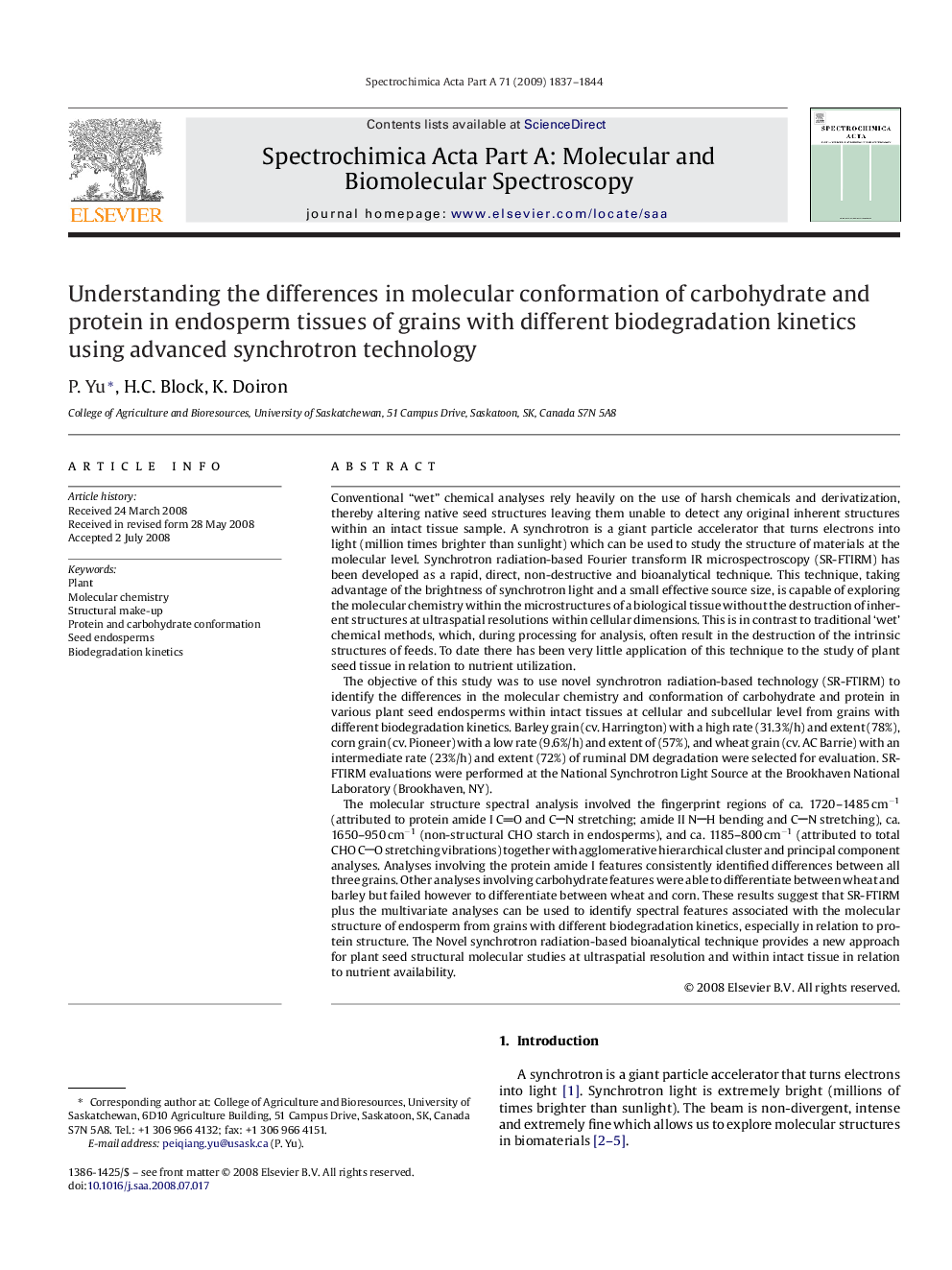| Article ID | Journal | Published Year | Pages | File Type |
|---|---|---|---|---|
| 1234979 | Spectrochimica Acta Part A: Molecular and Biomolecular Spectroscopy | 2009 | 8 Pages |
Conventional “wet” chemical analyses rely heavily on the use of harsh chemicals and derivatization, thereby altering native seed structures leaving them unable to detect any original inherent structures within an intact tissue sample. A synchrotron is a giant particle accelerator that turns electrons into light (million times brighter than sunlight) which can be used to study the structure of materials at the molecular level. Synchrotron radiation-based Fourier transform IR microspectroscopy (SR-FTIRM) has been developed as a rapid, direct, non-destructive and bioanalytical technique. This technique, taking advantage of the brightness of synchrotron light and a small effective source size, is capable of exploring the molecular chemistry within the microstructures of a biological tissue without the destruction of inherent structures at ultraspatial resolutions within cellular dimensions. This is in contrast to traditional ‘wet’ chemical methods, which, during processing for analysis, often result in the destruction of the intrinsic structures of feeds. To date there has been very little application of this technique to the study of plant seed tissue in relation to nutrient utilization.The objective of this study was to use novel synchrotron radiation-based technology (SR-FTIRM) to identify the differences in the molecular chemistry and conformation of carbohydrate and protein in various plant seed endosperms within intact tissues at cellular and subcellular level from grains with different biodegradation kinetics. Barley grain (cv. Harrington) with a high rate (31.3%/h) and extent (78%), corn grain (cv. Pioneer) with a low rate (9.6%/h) and extent of (57%), and wheat grain (cv. AC Barrie) with an intermediate rate (23%/h) and extent (72%) of ruminal DM degradation were selected for evaluation. SR-FTIRM evaluations were performed at the National Synchrotron Light Source at the Brookhaven National Laboratory (Brookhaven, NY).The molecular structure spectral analysis involved the fingerprint regions of ca. 1720–1485 cm−1 (attributed to protein amide I CO and CN stretching; amide II NH bending and CN stretching), ca. 1650–950 cm−1 (non-structural CHO starch in endosperms), and ca. 1185–800 cm−1 (attributed to total CHO CO stretching vibrations) together with agglomerative hierarchical cluster and principal component analyses. Analyses involving the protein amide I features consistently identified differences between all three grains. Other analyses involving carbohydrate features were able to differentiate between wheat and barley but failed however to differentiate between wheat and corn. These results suggest that SR-FTIRM plus the multivariate analyses can be used to identify spectral features associated with the molecular structure of endosperm from grains with different biodegradation kinetics, especially in relation to protein structure. The Novel synchrotron radiation-based bioanalytical technique provides a new approach for plant seed structural molecular studies at ultraspatial resolution and within intact tissue in relation to nutrient availability.
